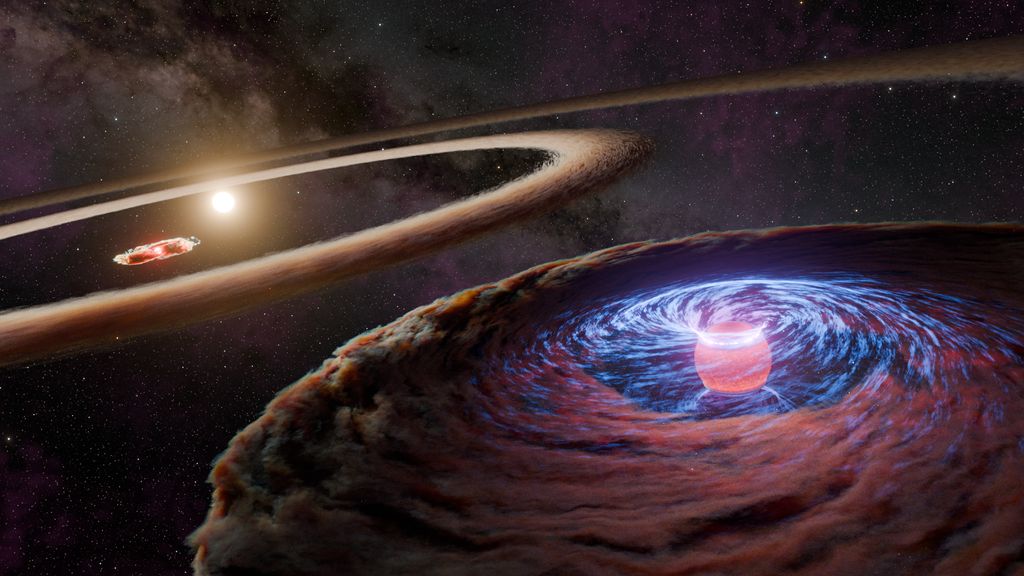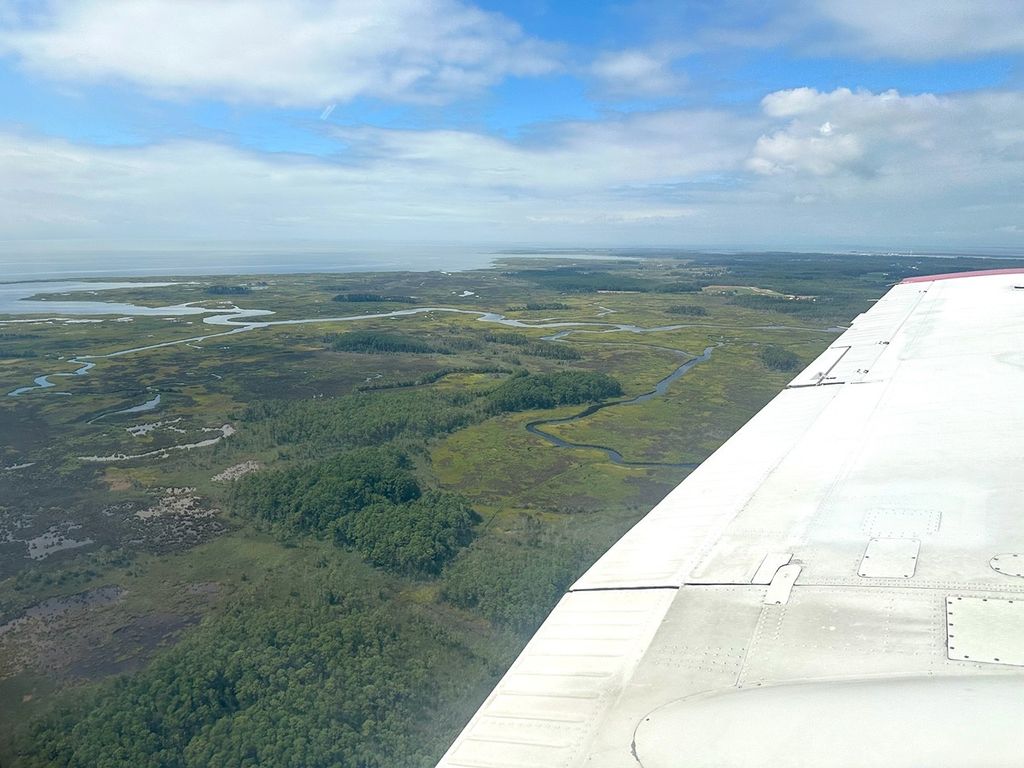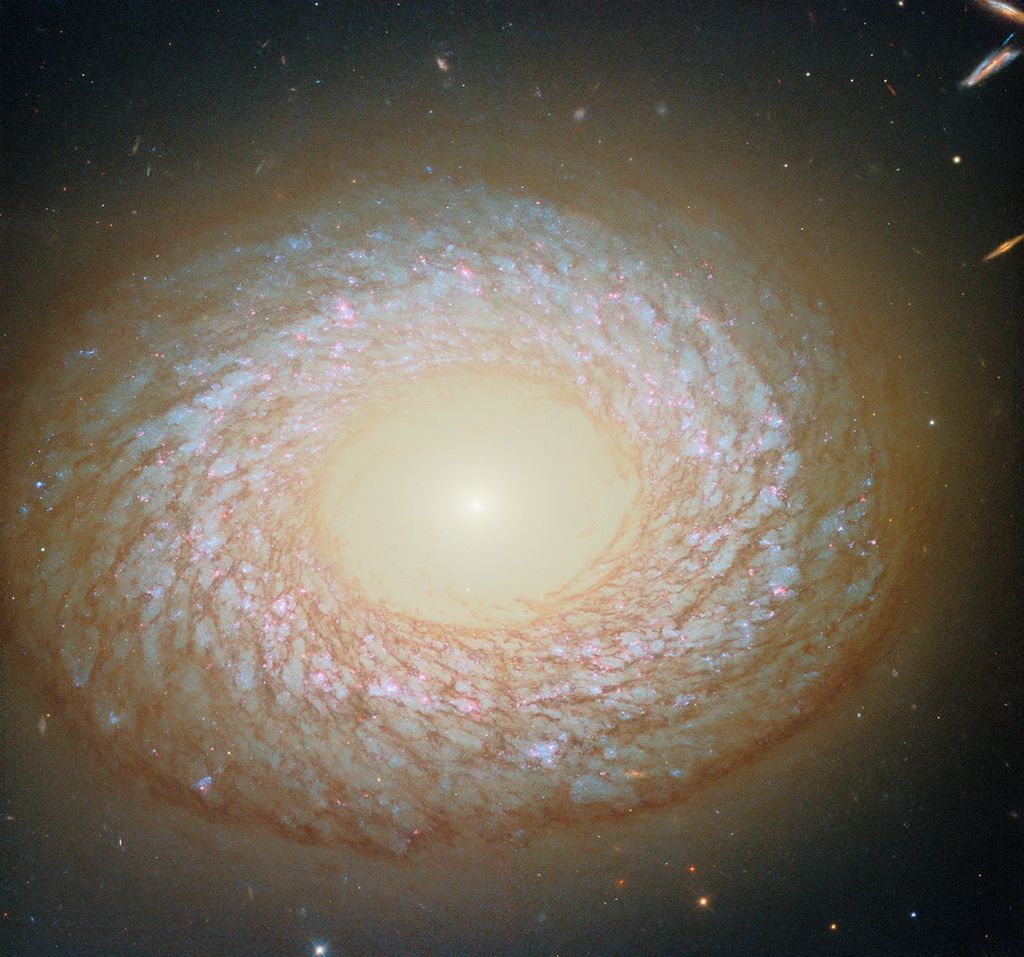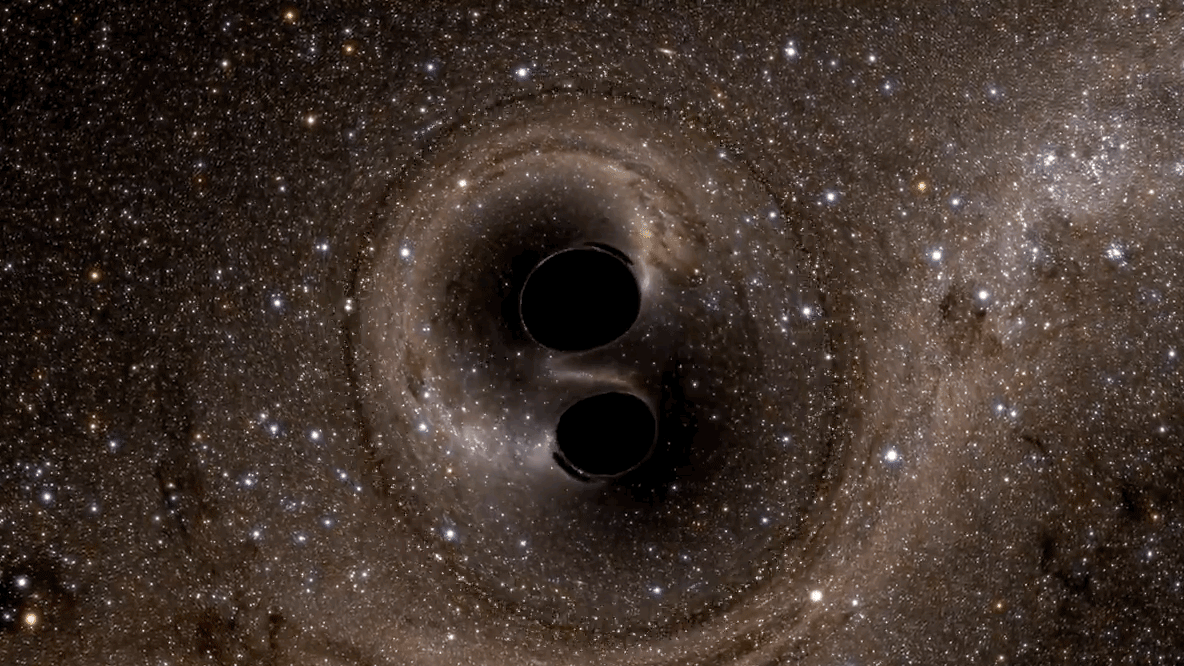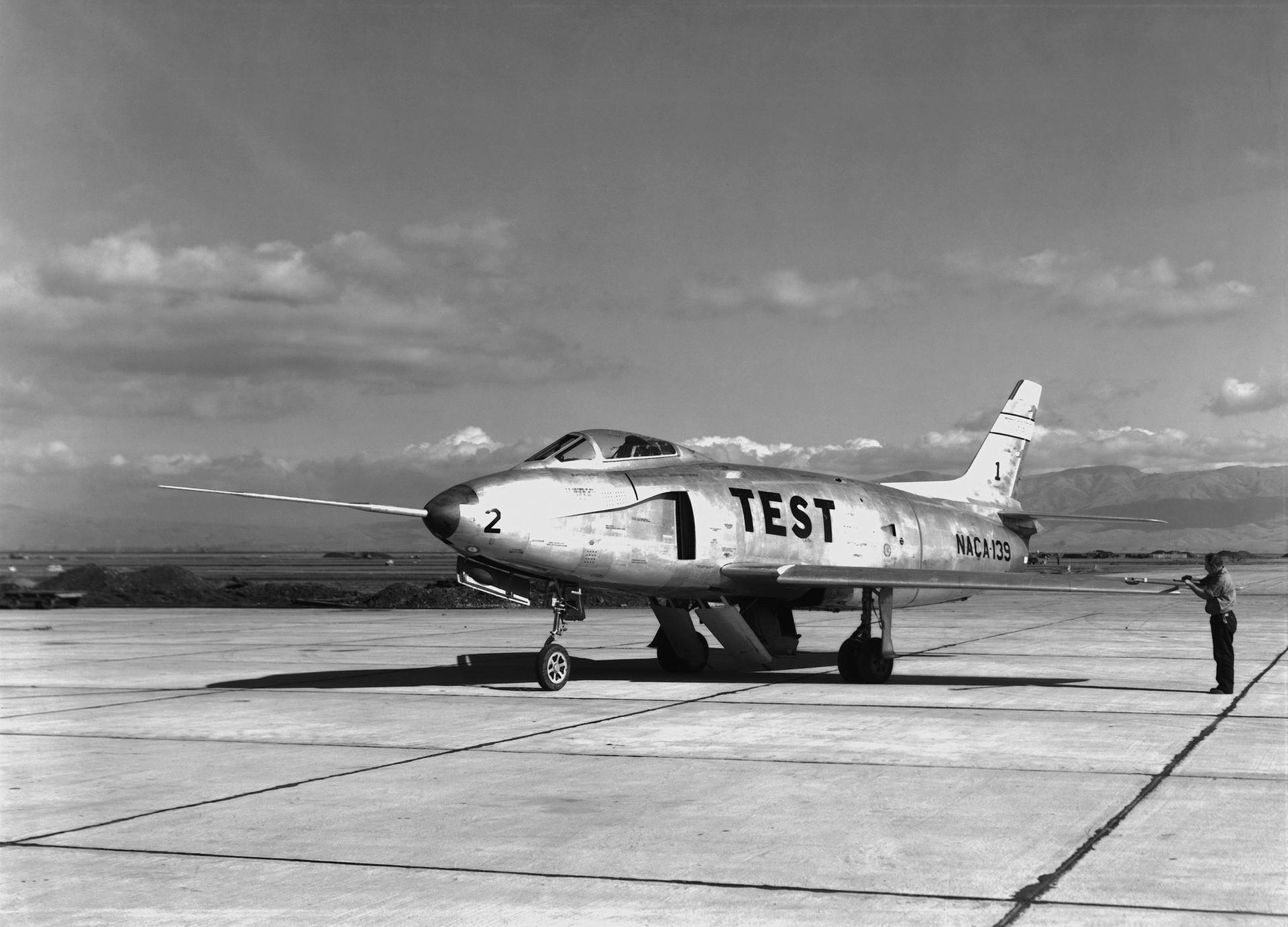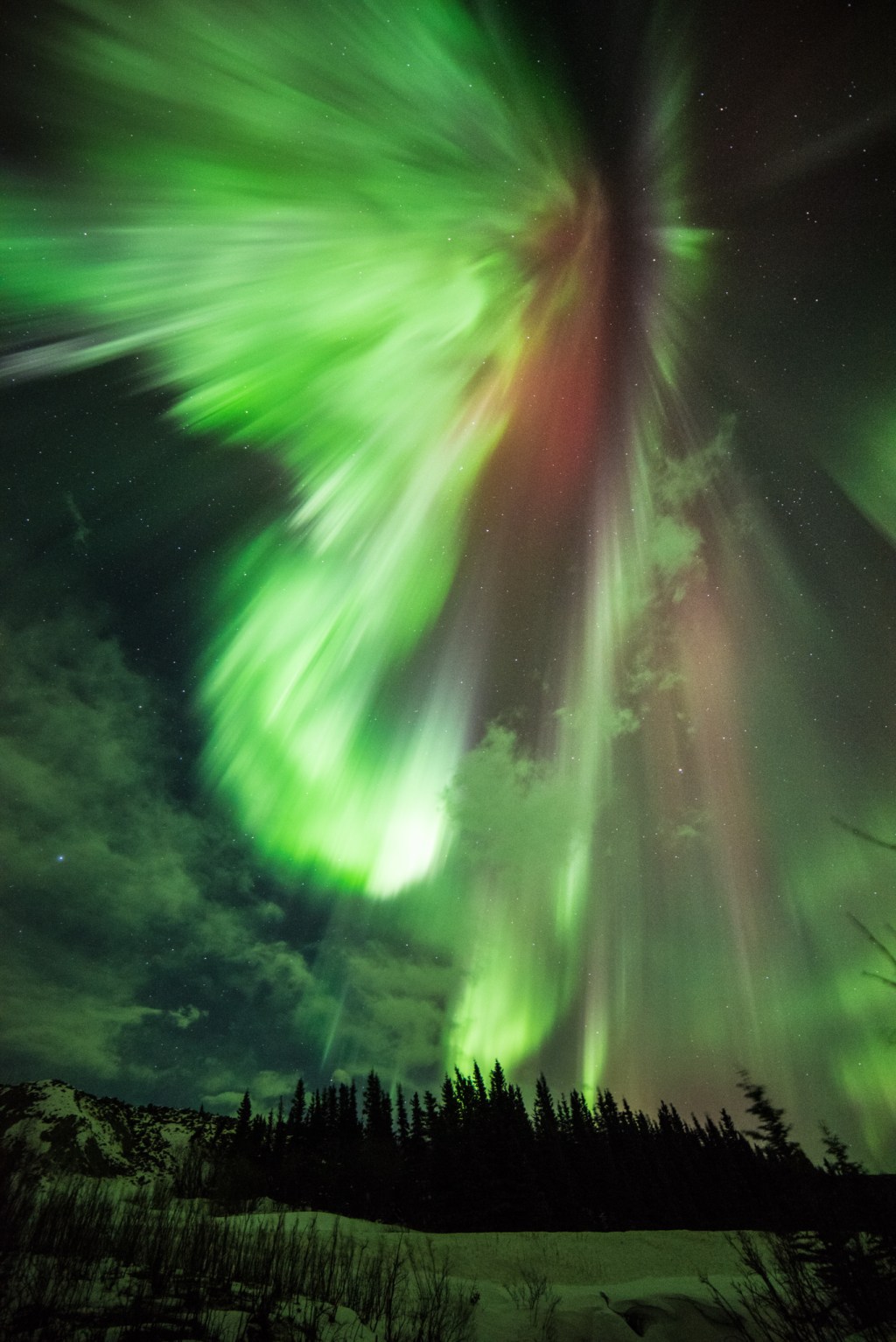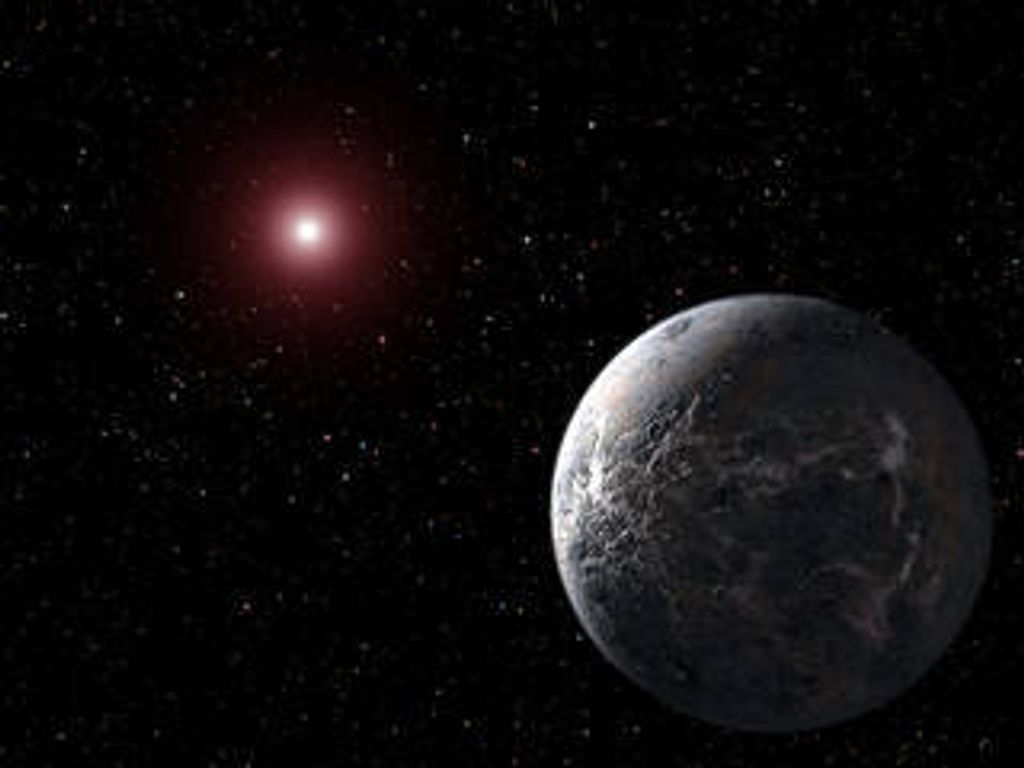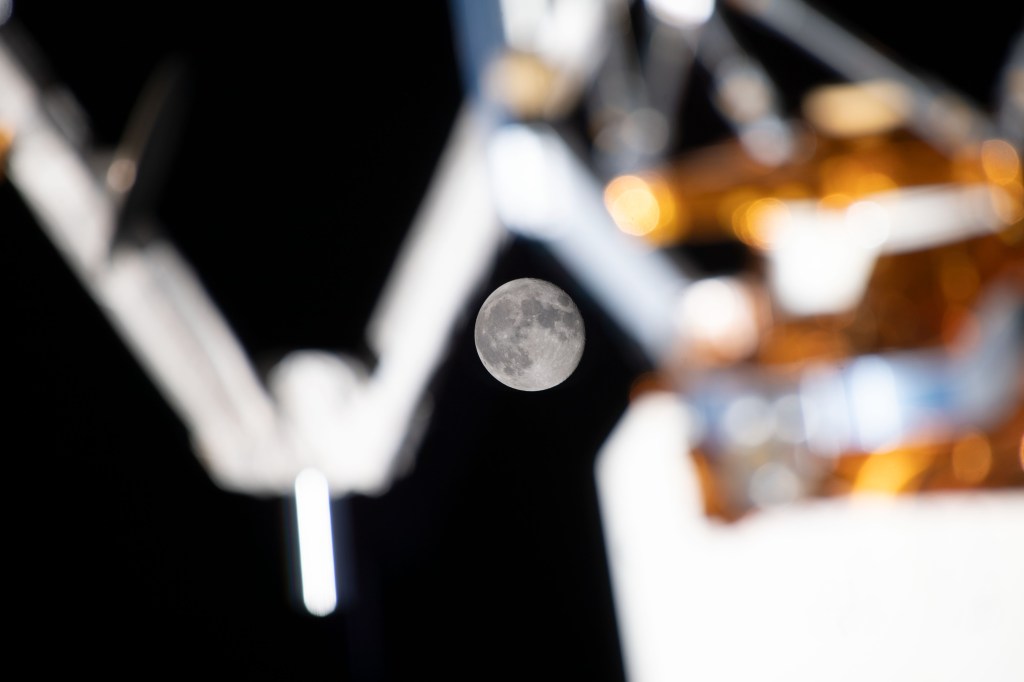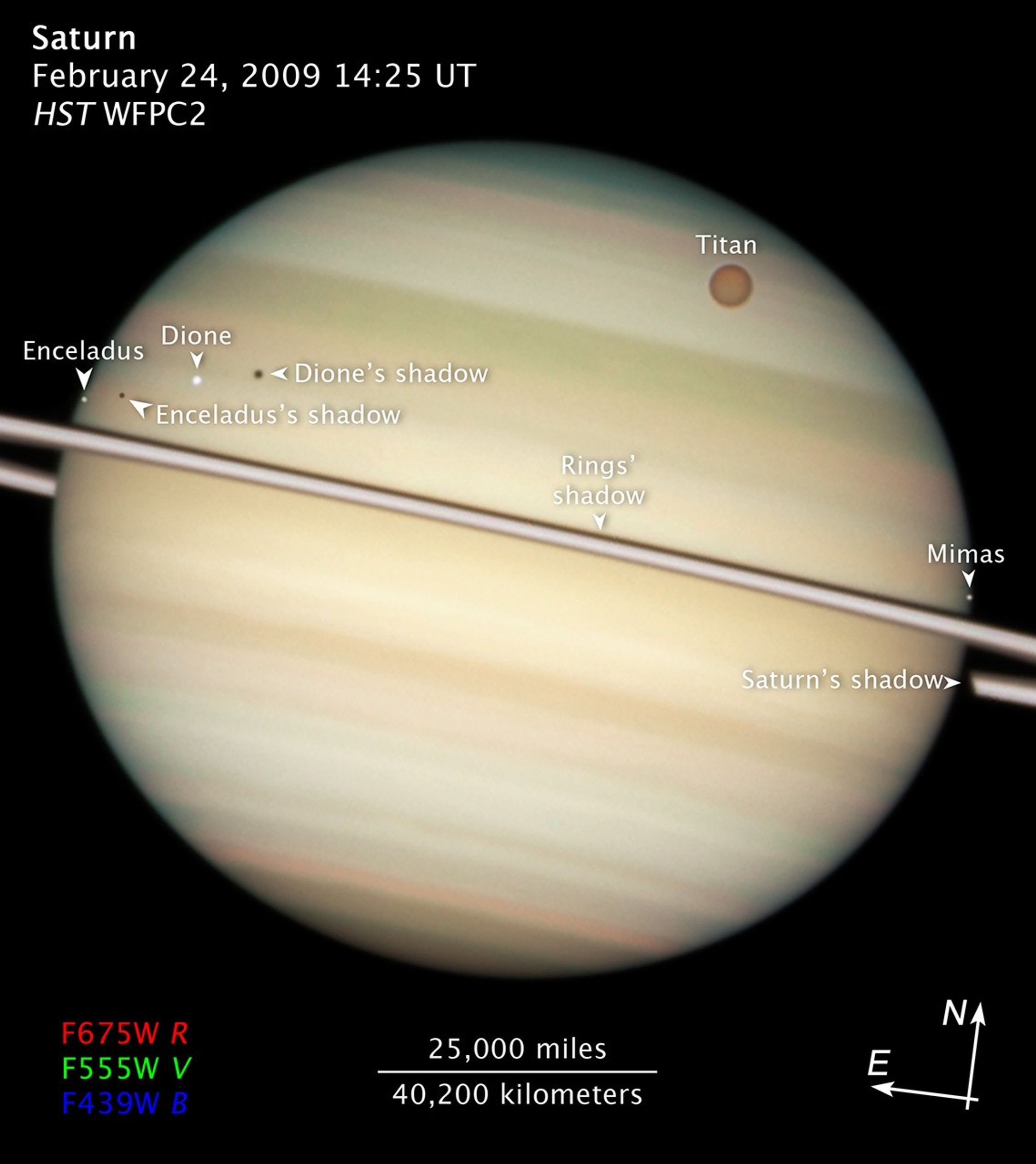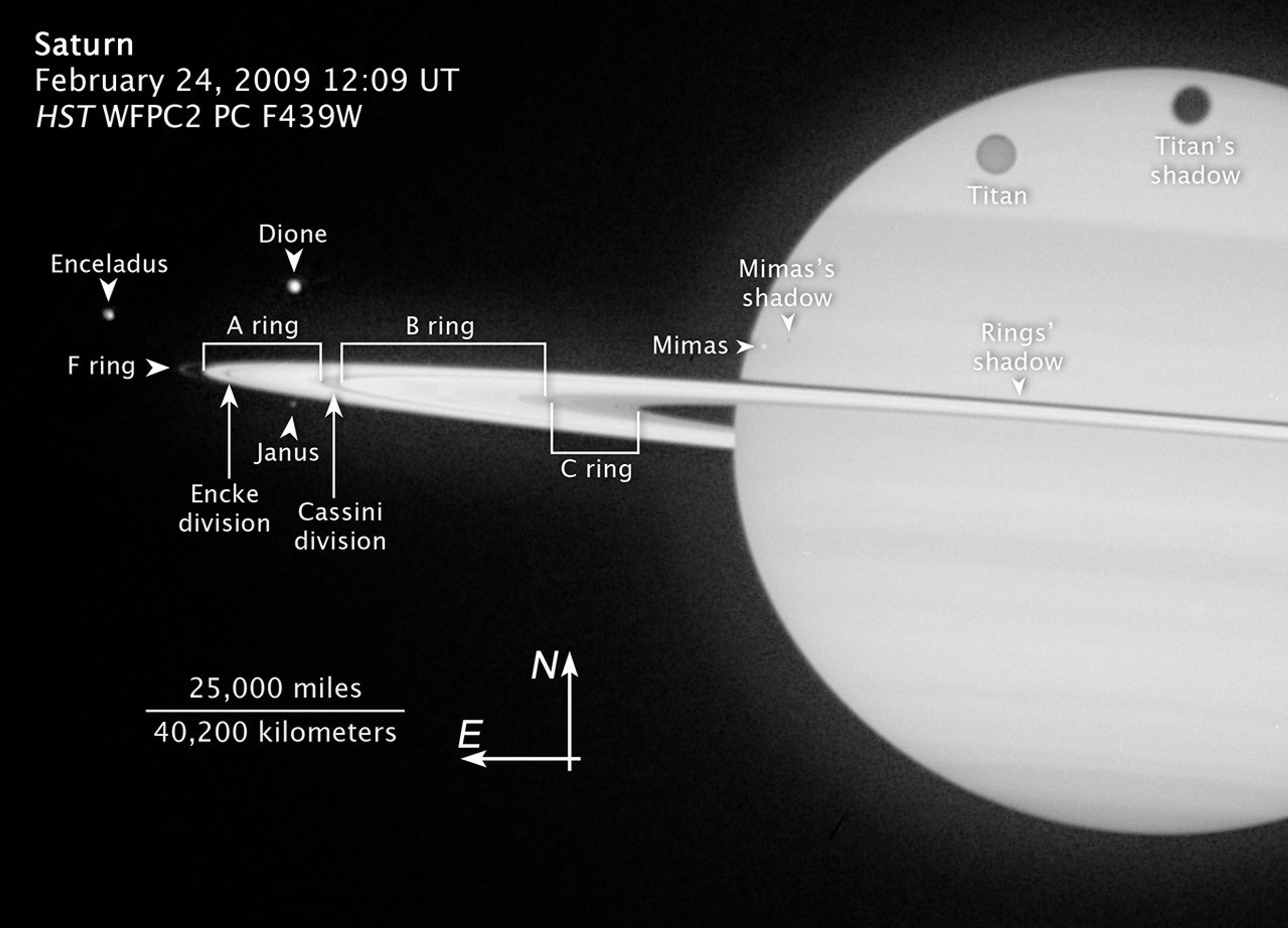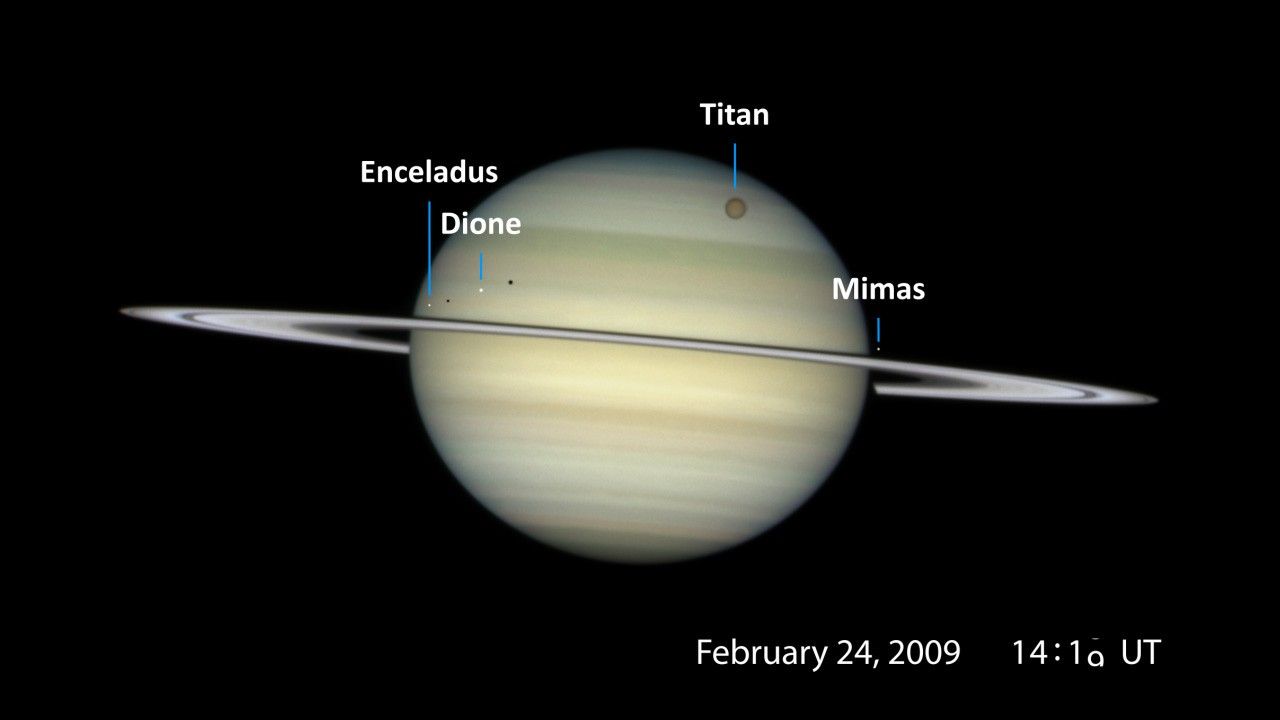1 min read
Closeup of Quadruple Saturn Moon Transit

About the Object
- DistanceDistanceThe physical distance from Earth to the astronomical object. Distances within our solar system are usually measured in Astronomical Units (AU). Distances between stars are usually measured in light-years. Interstellar distances can also be measured in parsecs.The semi-major axis of Saturn's orbit about the sun is 9.5 astronomical units (A.U.) or roughly 1.4 billion km.
- DimensionsDimensionsThe physical size of the object or the apparent angle it subtends on the sky.The planet (without rings) has a diameter of roughly 75,000 miles (120,000 km) at the equator.
About the Data
- Data DescriptionData DescriptionProposal: A description of the observations, their scientific justification, and the links to the data available in the science archive.
Science Team: The astronomers who planned the observations and analyzed the data. "PI" refers to the Principal Investigator.The Hubble images and videos were created from HST data from proposal 11956: K. Noll, Z. Levay, M. Mutchler, L. Frattare, C. Christian, F. Hamilton, and H. Bond (The Hubble Heritage Team/STScI/AURA). B. Januszewski (STScI), M.H. Wong (UC Berkeley/STScI), and C. Go (Phillipines) also helped with image conception, proposal preparation/processing and data analysis. - InstrumentInstrumentThe science instrument used to produce the data.HST>WFPC2
- Exposure DatesExposure DatesThe date(s) that the telescope made its observations and the total exposure time.February 24, 2009 14:25 UT
- FiltersFiltersThe camera filters that were used in the science observations.F439W (B), F555W (V), and F675W (R)
- Object NameObject NameA name or catalog number that astronomers use to identify an astronomical object.Saturn
- Object DescriptionObject DescriptionThe type of astronomical object.Planet with Satellites
- Release DateMarch 17, 2009
- Science ReleaseQuadruple Saturn Moon Transit Snapped by Hubble
- Credit

The image is a composite of separate exposures made by the WFPC2 instrument on the Hubble Space Telescope. Three filters were used to sample broad wavelength ranges. The color results from assigning different hues (colors) to each monochromatic image. In this case, the assigned colors are: Blue: F439W (B) Green: F555W (V) Red: F675W (R)

Related Images & Videos

Quadruple Saturn Moon Transit Snapped By Hubble
On February 24, 2009, the Hubble Space Telescope took a photo of four moons of Saturn passing in front of their parent planet. In this view, the giant orange moon Titan casts a large shadow onto Saturn's north polar hood. Below Titan, near the ring plane and to the left is the...
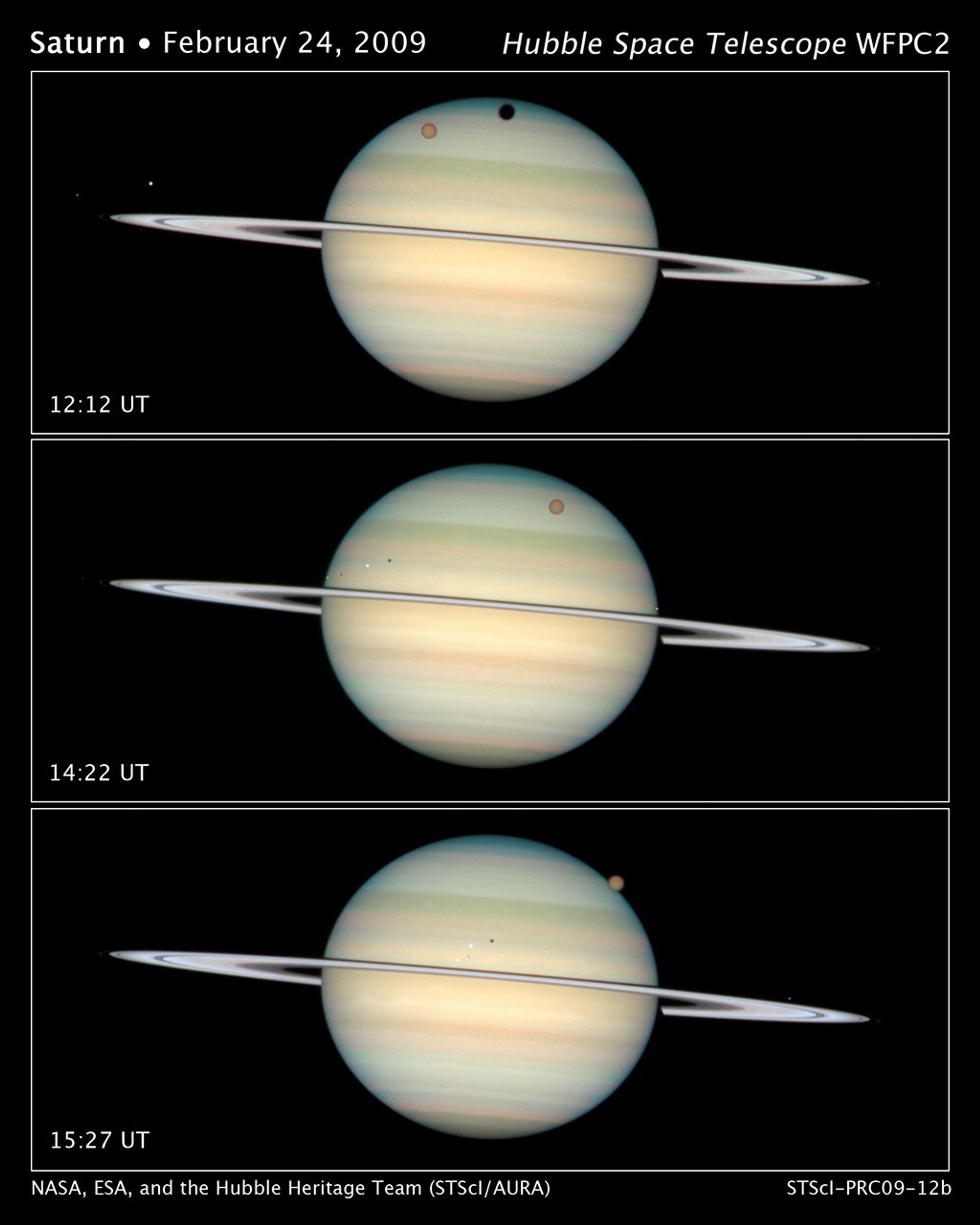
HST Image of Saturn Moon Transits
This sequence of images captures the parade of several of Saturn's moons transiting the face of the gas giant planet. This is a rare event because the rings are tilted edge on to Earth every 15 years. The top frame captures the giant moon Titan and its shadow near Saturn's...
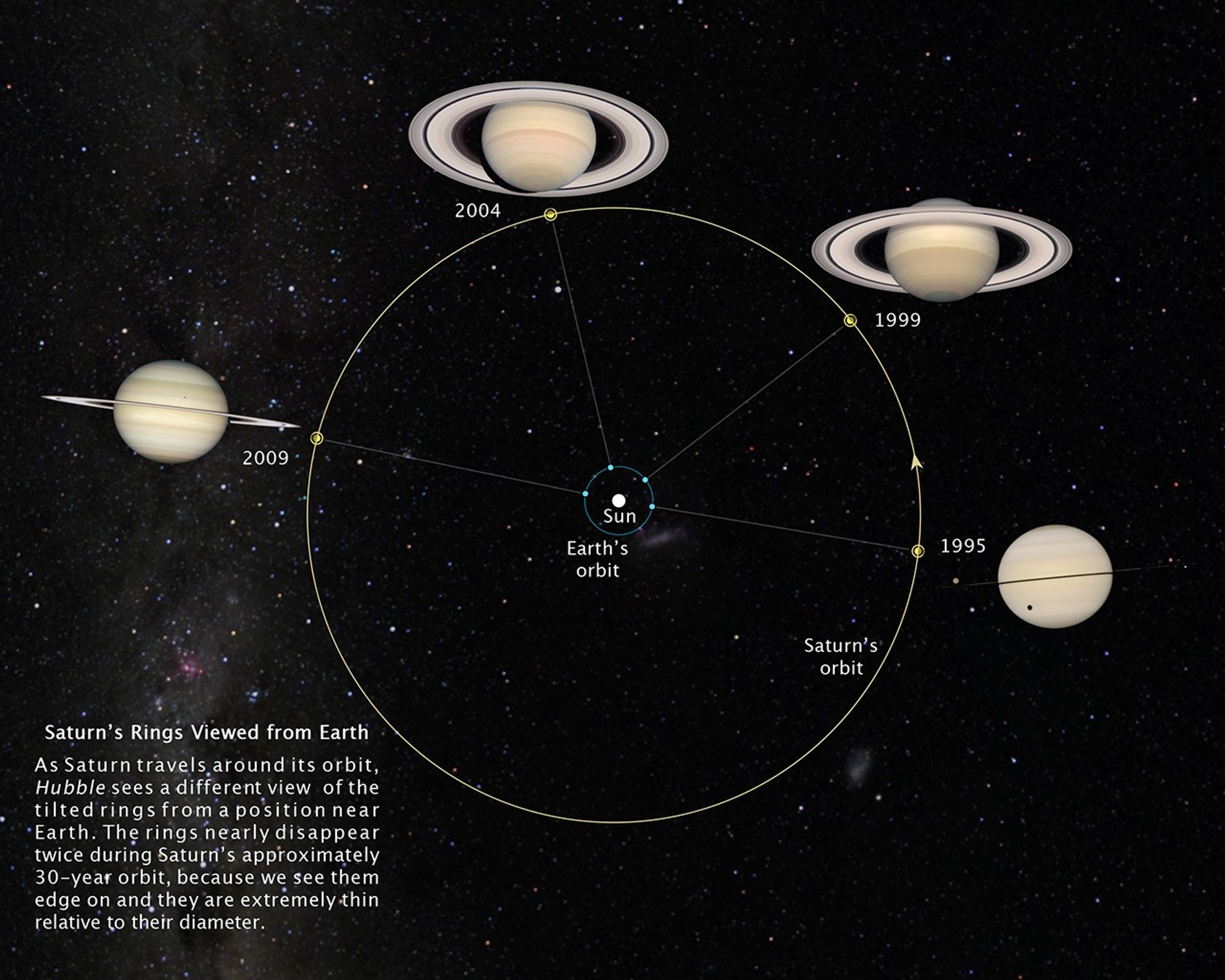
Saturn's Rings Viewed from Earth
As Saturn travels around its orbit, Hubble sees a different view of the tilted rings from a position near Earth. The rings nearly disappear twice during Saturn's approximately 30-year orbit, because we see them edge on and they are extremely thin relative to their diameter.
Share
Details
Claire Andreoli
NASA’s Goddard Space Flight Center
Greenbelt, Maryland
claire.andreoli@nasa.gov

